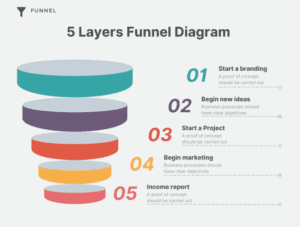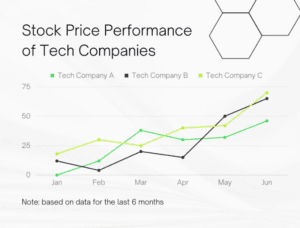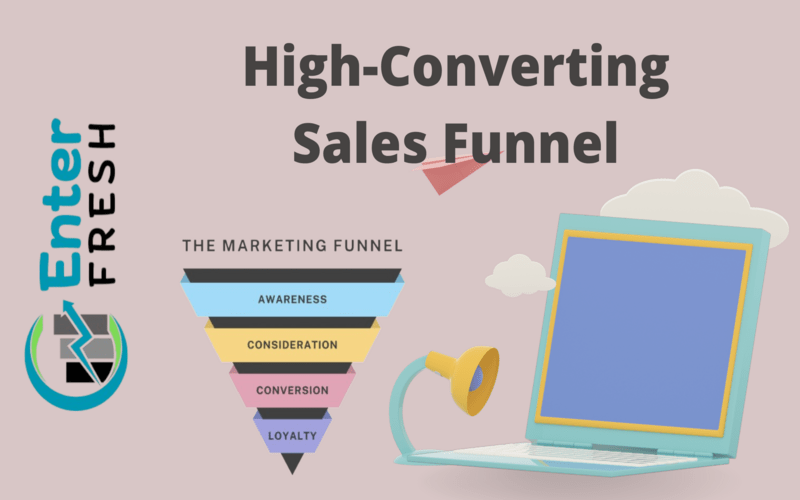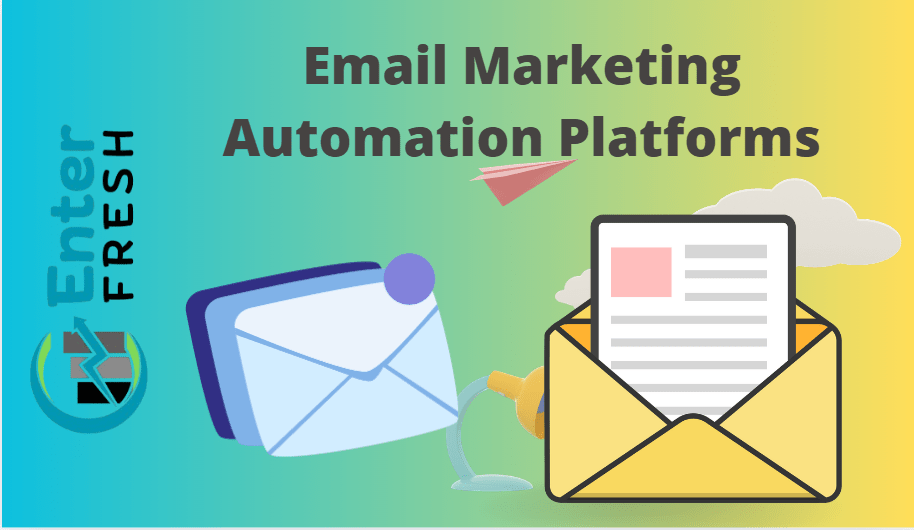Learn what a sales funnel is and why it matters for your business. This beginner’s guide explains each stage of the sales funnel, from awareness to action, and how it helps turn prospects into loyal customers.

What is a Sales Funnel?
A sales funnel is a visual representation of the journey potential customers take from discovering your business to becoming paying customers. It’s called a “funnel” because, at each stage, some people drop off, so the number of leads narrows as they move closer to making a purchase.
Understanding the Sales Funnel
A sales funnel is a step-by-step process that guides potential customers from their first interaction with your business to becoming paying customers. The shape of the funnel represents the narrowing journey as prospects move through each stage: while many people might be aware of your brand, fewer will make a purchase.
Why is a Sales Funnel Important?
The sales funnel helps you:
- Understand your customer’s journey – It shows how people go from learning about your business to becoming customers.
- Optimize your marketing strategy – By knowing which stages need improvement, you can boost conversion rates.
- Identify sales opportunities – The funnel highlights areas where you can add value, nurture leads, and address objections.
The Stages of a Sales Funnel
Most sales funnels have four main stages, often summarized as AIDA: Awareness, Interest, Decision, and Action. Let’s dive into each.
1. Awareness
At this top-of-funnel (TOFU) stage, potential customers are just becoming aware of your brand, product, or service. They may have come across your website, an ad, or a social media post.
Goal: Capture their attention and provide value. For example:
- Publish blog posts that solve common problems.
- Use SEO to attract organic traffic.
- Run ads to increase visibility.
2. Interest
In this stage, prospects have shown interest in your business and want to know more. They may start engaging with your content, following you on social media, or subscribing to your email list.
Goal: Build trust and show your expertise. For example:
- Offer valuable content, like eBooks or webinars.
- Send educational emails to nurture their interest.
3. Decision
This middle-of-funnel (MOFU) stage is where prospects actively consider purchasing your product or service. They might compare your offerings to competitors, read reviews, and evaluate options.
Goal: Help them see why your product is the best choice. For example:
- Provide detailed product information, demos, or free trials.
- Offer discounts, limited-time offers, or bonuses.
- Address common objections through FAQs or customer testimonials.
4. Action
At the bottom of the funnel (BOFU), this stage is where the prospect decides to purchase (or not). Here, a well-timed call-to-action (CTA) and seamless checkout process can make all the difference.
Goal: Make it easy for them to buy. For example:
- Simplify the purchase process with a user-friendly website.
- Use retargeting ads to remind them of their interest.
- Send follow-up emails if they abandon their cart, offering help or support.

Building and Optimizing Your Sales Funnel
Creating a sales funnel involves understanding each stage and optimizing it to move prospects forward. Here are a few tips:
- Create valuable content that addresses your audience’s needs.
- Use lead magnets to capture emails and nurture relationships.
- Track and analyze each stage’s performance, identifying drop-off points.
- Refine your funnel over time by adjusting your approach based on data.
Conclusion: How a Sales Funnel Helps Your Business
A well-designed sales funnel can guide your audience toward becoming loyal customers. By understanding each stage and continually optimizing, you can increase conversions and build a stronger business foundation. Whether a small business or a large enterprise, mastering the sales funnel will help maximize every interaction and boost your bottom line.
If you need to create any sales funnel Check Here


